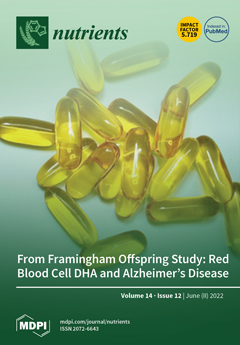Probiotics improve brain function, including memory and cognition, via the microbiome–gut–brain axis. Oral administration of
Bifidobacterium breve MCC1274 (
B. breve MCC1274) improves cognitive function in
AppNL-G-F mice and mild cognitive impairment (MCI) subjects, and mitigates Alzheimer’s disease (AD)-like pathologies. However, its
[...] Read more.
Probiotics improve brain function, including memory and cognition, via the microbiome–gut–brain axis. Oral administration of
Bifidobacterium breve MCC1274 (
B. breve MCC1274) improves cognitive function in
AppNL-G-F mice and mild cognitive impairment (MCI) subjects, and mitigates Alzheimer’s disease (AD)-like pathologies. However, its effects on wild-type (WT) mice have not yet been explored. Thus, the effects of
B. breve MCC1274 on AD-like pathologies in two-month-old WT mice were investigated, which were orally administered
B. breve MCC1274 for four months. Aβ levels, amyloid precursor protein (APP), APP processing enzymes, phosphorylated tau, synaptic protein levels, glial activity, and cell proliferation in the subgranular zone of the dentate gyrus were evaluated. Data analysis was performed using Student’s
t-test, and normality was tested using the Shapiro–Wilk test. Oral administration of
B. breve MCC1274 in WT mice decreased soluble hippocampal Aβ42 levels by reducing presenilin1 protein levels, and reduced phosphorylated tau levels. It also activated the protein kinase B (Akt)/glycogen synthase kinase-3β (GSK-3β) pathway, which may be responsible for the reduction in presenilin1 levels and inhibition of tau phosphorylation.
B. breve MCC1274 supplementation attenuated microglial activation and elevated synaptic protein levels in the hippocampus. These findings suggest that
B. breve MCC1274 may mitigate AD-like pathologies in WT mice by decreasing Aβ42 levels, inhibiting tau phosphorylation, attenuating neuroinflammation, and improving synaptic protein levels.
Full article






